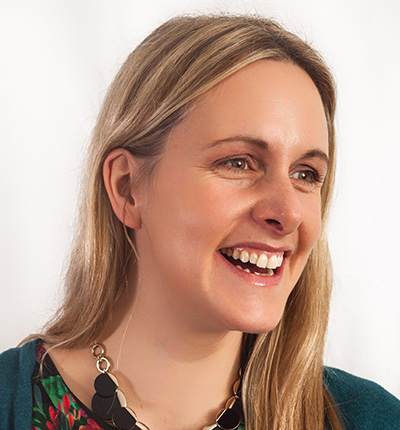How To Deal with Difficult Clients
This is a guest post written by Sharp Relations founder AJ Sharp.
 Writing this article made me realise we’re extremely lucky that we genuinely don’t have any clients that I would describe as ‘difficult’. However, reflecting on the past few decades – working for London PR agencies and perhaps also, when I started my own agency Sharp Relations nearly 11 years ago – it’s fair to say that we had a few more difficult conversations back then. So, I started pondering the change.
Writing this article made me realise we’re extremely lucky that we genuinely don’t have any clients that I would describe as ‘difficult’. However, reflecting on the past few decades – working for London PR agencies and perhaps also, when I started my own agency Sharp Relations nearly 11 years ago – it’s fair to say that we had a few more difficult conversations back then. So, I started pondering the change.
I think the answer is that we have become a lot better at making sure we don’t arrive in a space where a client might feel motivated to become ‘difficult’. I don’t think a client ever starts off being difficult but perhaps they move into that space when they don’t feel that their needs are being properly met by the agency.
Let’s stop using the word ‘client’ for a moment and remember that all clients are business owners, founders and entrepreneurs. They are emotionally, physically and financially invested in the success of their business. They have clear goals, objectives, ambitions, and dreams for their business and the better you understand these motivations and drivers, the better you will be able to meet their business needs.
How to prevent clients from becoming difficult in the first place.
From the off, it is imperative to understand the intrinsic motivations for a business to employ a PR agency. What problem are you helping to solve? No one wakes up one day and decides, ‘Gee let’s get a PR Agency, that seems like fun!’. There’s always a challenge the business is experiencing. Understand the challenge, and you will be able to design and deliver a brilliant communications plan which will drive the business towards its goals.
Secondly, you need to agree Key Performance Indicators (KPIs), which could relate to reach, pieces of coverage, industry sectors, time spent, shares on social media and so on. It’s crucial to agree and discuss these KPIs up front. Show some examples of previous work you’ve done so they can envisage how it will look and feel for them. Get all KPIs agreed in writing from the outset, then you know you’re on the same page.
Thirdly, you need to manage expectations. This can come in so many forms:
Results: A client is happy if they understand exactly what is happening, how long it will take and when they can expect to see results. Lead times for specific stories are always a conversation that needs to be had, no matter how experienced they are with PR. What is obvious to you is not necessarily at the forefront of their mind.
Contact: They also need to know how and when they can contact you. You cannot possibly be available between anytime 9am and 5pm every day, you have other meetings, other clients and of course, the work itself. A regular virtual meeting and ad hoc on email works well. Explain this up front. Collaborative documents can also work for some teams.
Input: What are you going to need from them? And how often will you need their time? This is so important; some business owners can be surprised at how much input is required from them to get great PR pieces.
Under promise and over deliver: This is my favourite technique. If you’re sure you can do it by Wednesday, tell the client Friday. If everything goes to plan you deliver early and you look good, if you get a curve ball from elsewhere in the meantime, you have ‘fudge-factor’. Believe me, giving your clients increasingly unrealistic deadlines to deliver work to them, does not make you look good especially if you don’t always hit your deadlines. They’d rather have the realistic deadlines and for you to be reliable and consistent with them.
By managing expectations properly from the outset, you won’t face any difficulties. It’s much harder to justify your way of working once it’s been flagged as a potential issue than it is to say from the outset ‘this is how we work’. Be open, honest, and transparent. You don’t have to justify it or explain your processes, it is simply how you work.
What if you already have a difficult client, how can you change the dynamic?
I would assert that fundamentally one of the above factors has probably not been fulfilled to the level that is required. In the past, if I suspected that a client was starting to become ‘difficult’ I would ask for a call with the client straight away and open a dialogue. I would go back over their intrinsic motivations, KPIs and, if necessary, spend more time managing expectations.
Consider the impetus of why a client might have decided they need to be ‘difficult’. Difficult usually looks like unrealistic expectations, not listening to advice or micro-managing.
It’s important to get around their side of the table as it were and really listen to what they need and the pressures they are facing. You are their ally; you are there to help them achieve their objectives. What is it that isn’t going the way they hoped? Sometimes it’s not the PR work, but a change in messaging from the board level, or a new focus within the business. Are you still following the old PR plan, or have you reworked it to reflect the new changes? Work smarter not harder – make sure you’re doing the right activities to deliver the results the client really wants and needs.
AJ Sharp is the founder of Sharp Relations, an award-winning food, drink, hospitality and travel PR agency. AJ is a judge for the Great Taste Awards and a member of the Guild of Food Writers.
Need tools for managing your stakeholders? Demo Vuelio’s Stakeholder Engagement products.



Leave a Comment